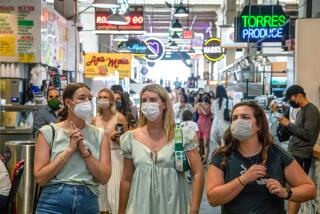L.A. County’s holiday COVID-19 restrictions face skepticism from a weary public. Will people obey?
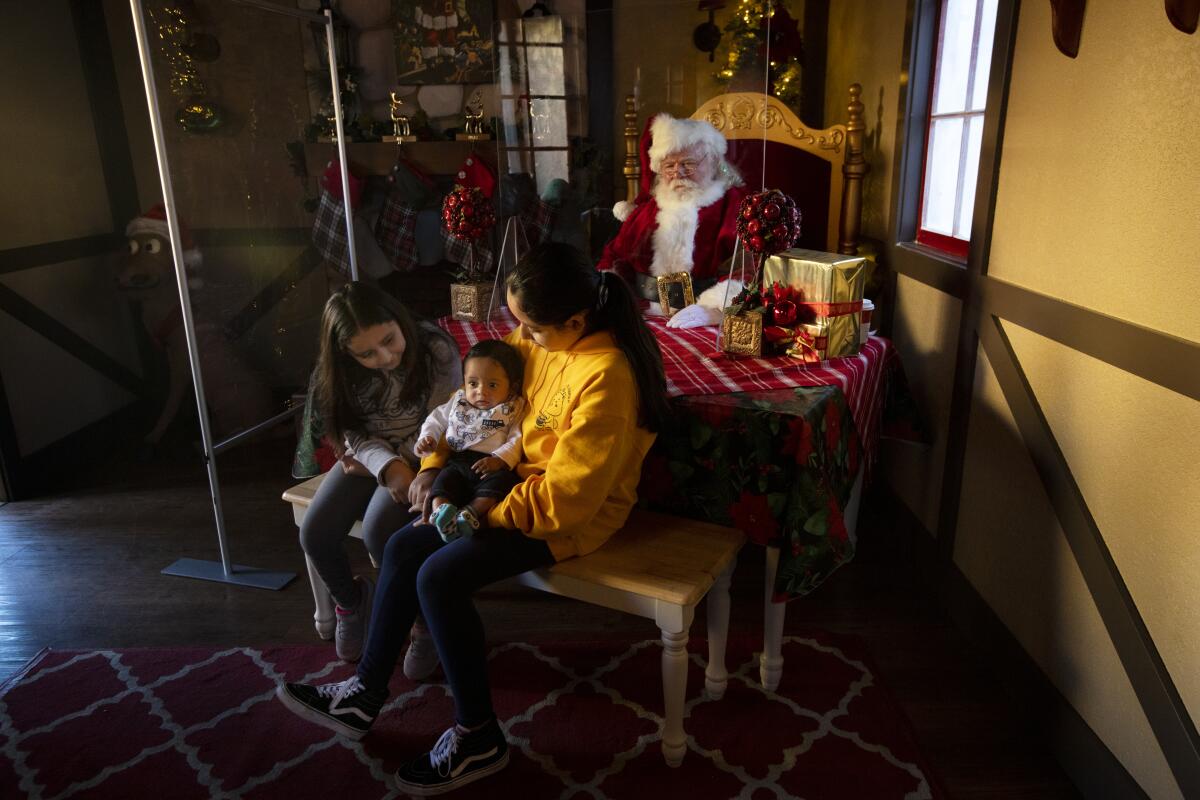
It was a Black Friday contrast that spoke to the immense challenge facing public health officials as they try to slow an unprecedented coronavirus surge during a holiday season that many hoped would be a reprieve from a year of pandemic restrictions.
Los Angeles County public health officials announced a slew of new restrictions Friday afternoon, banning most gatherings and placing new limits on businesses. At that very moment, shoppers were swarming the Citadel Outlets in Commerce searching for holiday deals. Videos showing long lines of hundreds of shoppers trying to get into stores and parking lots filled nearly to capacity, with cars circling looking for an empty space, went viral on social media.
More than eight months into the pandemic that’s upended everyday life, Californians are exhausted by the disruptions and becoming more vocal about the new rules despite swelling hospitalization numbers and forecasts of rising death tolls.
Until now, L.A. County residents have by and large accepted the rules, especially compared with other parts of the country. But the county’s decision to suspend outdoor restaurant dining last week sparked a major backlash, with some questioning whether the cure was worse than the disease. The latest round of restrictions also brought groans, especially the closure of playgrounds, which some parents say have been a lifeline for their stir-crazy kids.
Health experts hope the public can make yet another sacrifice — and alter their holiday norms — for the greater good. But they also know it’s getting harder as some grow skeptical of the rules and others simply need more human contact.
“Everything that people do, you have to ask yourself: Is it worth it? Is it worth losing somebody that I love?” said Anne Rimoin, professor of epidemiology at the UCLA Fielding School of Public Health. “I think people forget that these decisions are life-and-death decisions.”
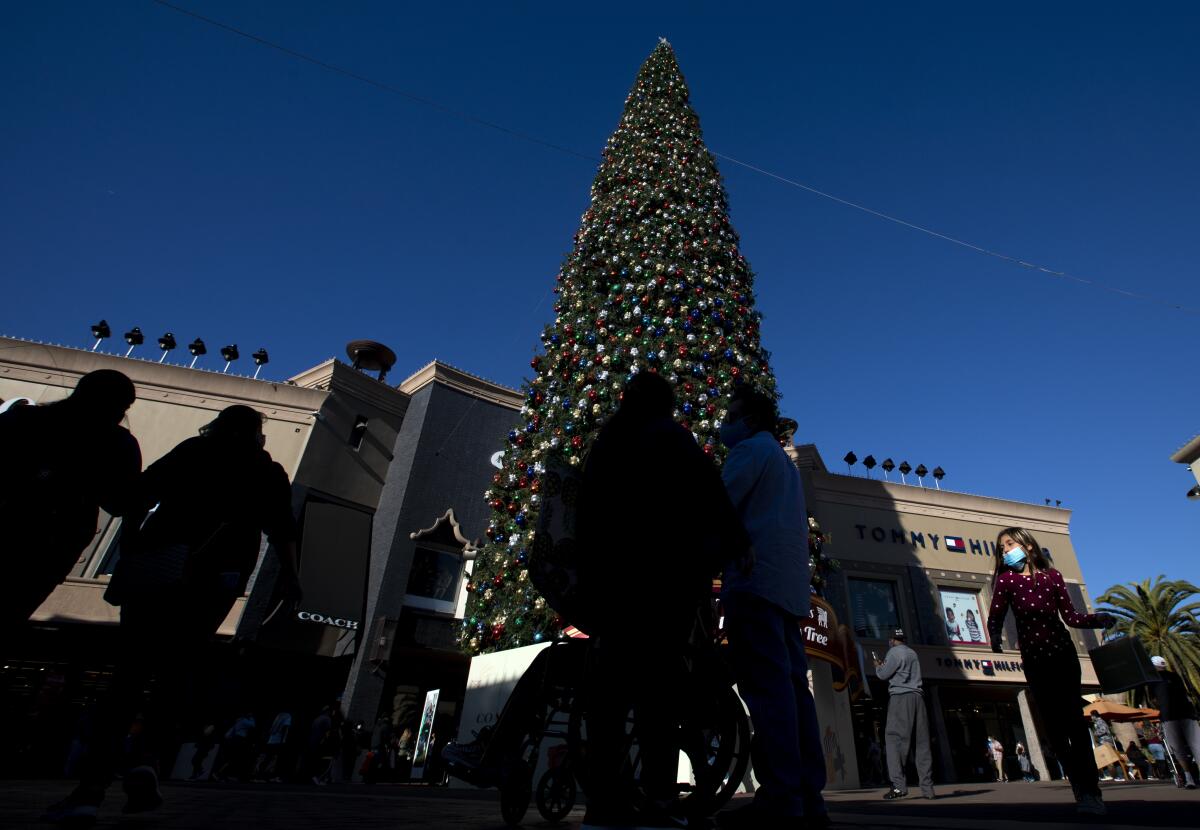
Officials have warned that even more strict rules — perhaps a more formal stay-at-home order — are likely if L.A. can’t begin to bend the curve on this third wave. A lot will rest on whether people followed the public health pleas and avoided large Thanksgiving gatherings and crowds.
Barbara Ferrer, the L.A. County public health director, said Saturday that the “big unknown” was how people were spending the holiday weekend: Were they engaging in behaviors and activities considered to be safe or risky?
“If they’re the latter … we’re in for a very rough time because we will have a surge on top of a surge,” she said.
The scene at the Citadel Outlets near downtown Los Angeles was more subdued Saturday but still lively.
Things were a little different from normal for Santa Claus inside his cottage. For one, he sat behind a plexiglass screen and his lap was off-limits.
And there were not many children. On the Saturday after Thanksgiving, things started slowly — with one child in a 30-minute late morning span. Usually 40 to 50 people would be lined up out the door, said Jose Marroquin, one of Santa’s helpers.
And though most of the visits hit the normal touch points of naughty, nice and what do you want, one 6-year-old girl had a special request.
“She didn’t want to wish for anything for herself at Christmas,” said Santa, played by Ray Hamlett. “She just wanted COVID to go away.”
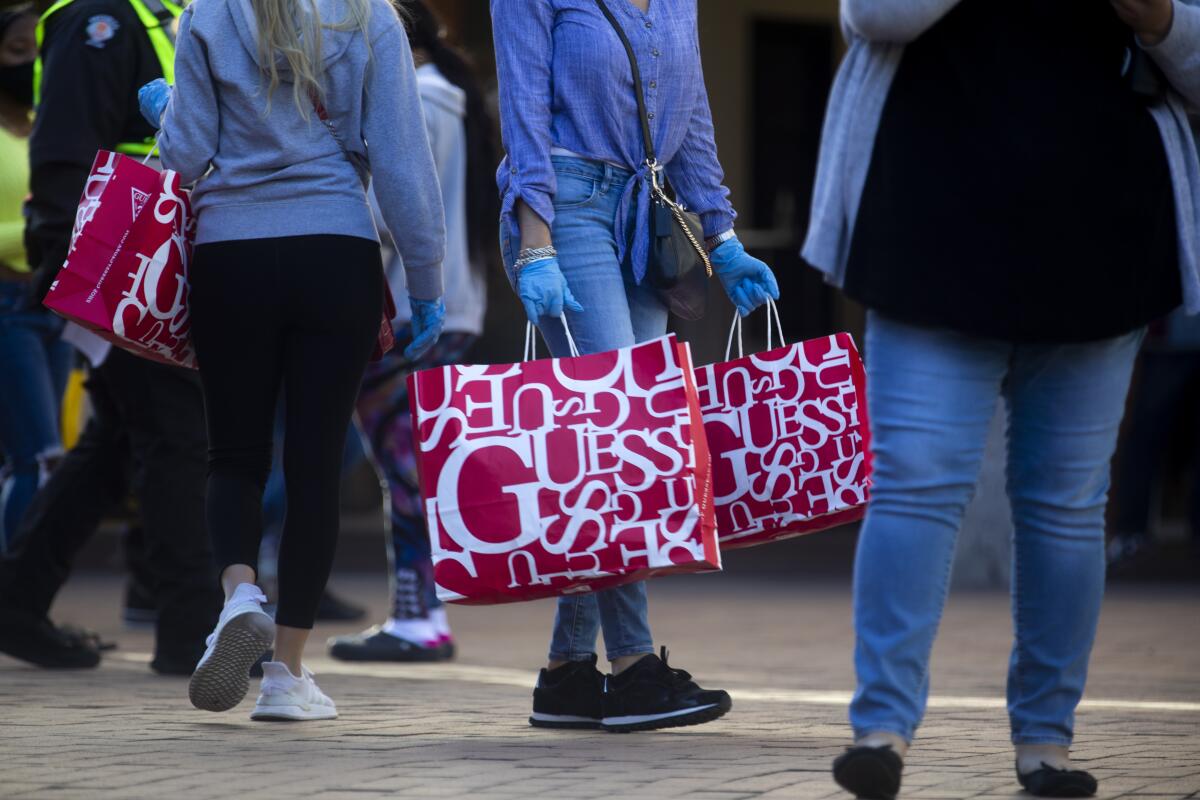
But transmission of the coronavirus is on the rise in L.A. County, mirroring a trend seen statewide and elsewhere in the country. Two months ago, officials estimated that 1 in 880 L.A. County residents were infected with the coronavirus; now, they believe it’s 1 in 145 and climbing, meaning the activities that people once enjoyed safely now pose more risk.
Public health officials on Saturday reported 3,143 new cases of the virus and 19 deaths but said that the numbers were low because no community testing was offered on Thanksgiving, and only limited testing was performed the day after. Nonetheless, officials said, the proportion of tests coming back positive doubled over the last two weeks, reaching 7.4%.
L.A. County has now recorded 391,225 cases of the virus, and 7,623 people have died.
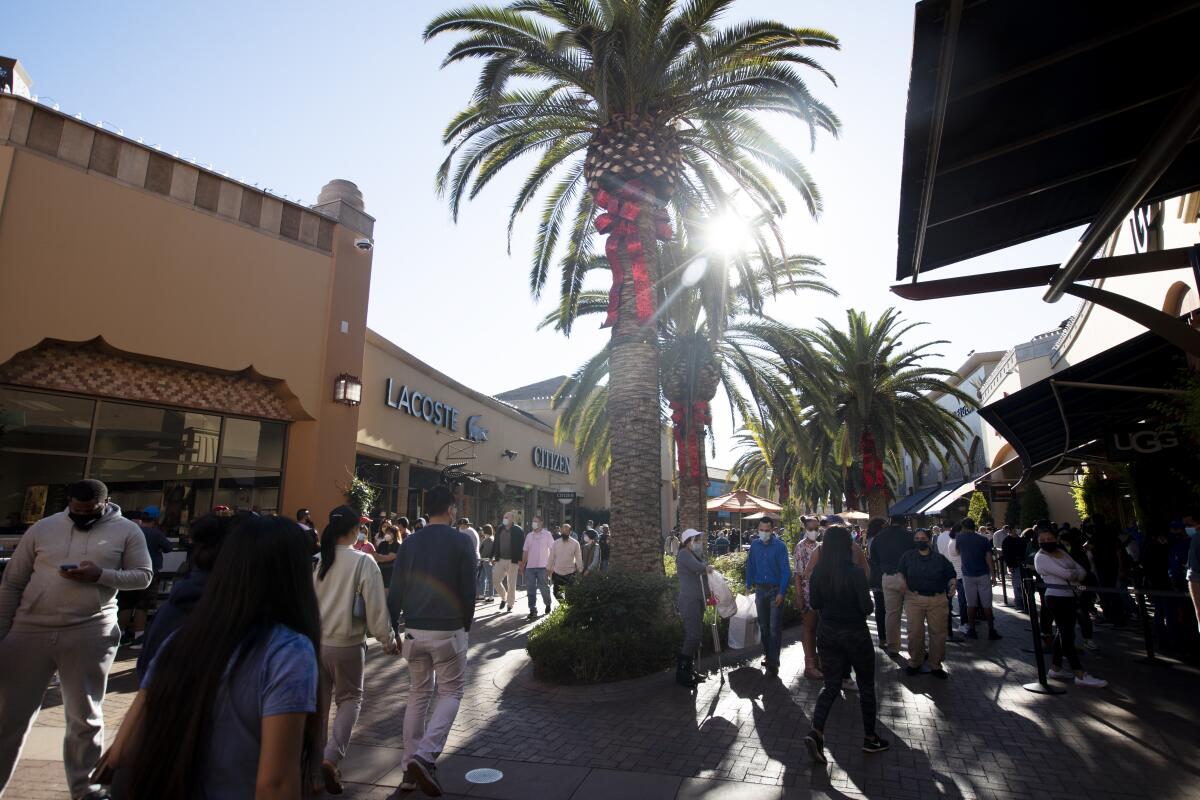
Public health officials are especially worried that hospitalizations are increasing at a rapid clip. There were 2,049 confirmed COVID-19 patients in L.A. County hospitals as of Friday, an increase of 173% from a month before, when there were 700 patients, according to data from the state. The number is now approaching the figure seen during the peak of the crisis in mid-July, when hospitalizations topped 2,200.
Because hospitalizations reflect cases that were identified two to three weeks earlier, officials are certain they’ll continue to increase for the next two to three weeks, given the recent case numbers.
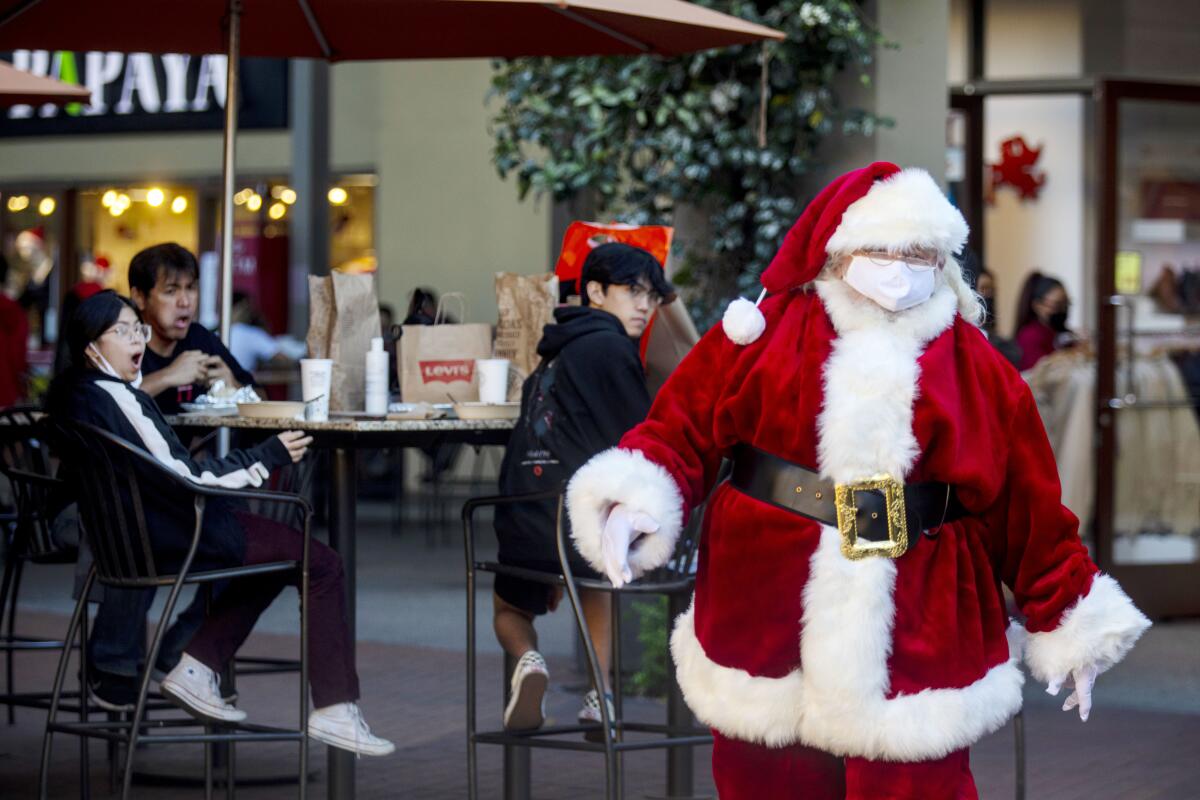
The pace of the increase has officials scrambling to take steps to slow the virus’ spread while avoiding more draconian measures that could see broad swaths of businesses shut down entirely, as they were in March.
Most recently, on Friday, L.A. County announced a limited stay-at-home order, which takes effect Monday and will be in place through Dec. 20.
The order prohibits all public and private gatherings with people from multiple households except for religious services and protests, which officials say are constitutionally protected rights. It also reduces occupancy limits on businesses.
In some cases, the reductions are modest — for instance, nonessential retail stores and personal care services are permitted to operate at 20% of maximum capacity, down from 25% earlier in the month. In other cases, the limits are more significant: Grocery stores saw their occupancy limits slashed from 50% to 35% of the maximum.
Still, many business sectors that were shut down during the last round of stay-at-home orders, such as indoor malls, shopping centers and other nonessential retail stores, were permitted to remain open. The only new closures announced Friday were of card rooms and playgrounds.
In the late morning at the Citadel Outlets, seven customers were inside Claire’s, all under the watchful eye of Fernanda Beiza, who is always counting. The new limit, based on the size of her store, is 10, she said, down from 16.
“It is stressful,” Beiza said, “because there’s only a certain amount of people.”
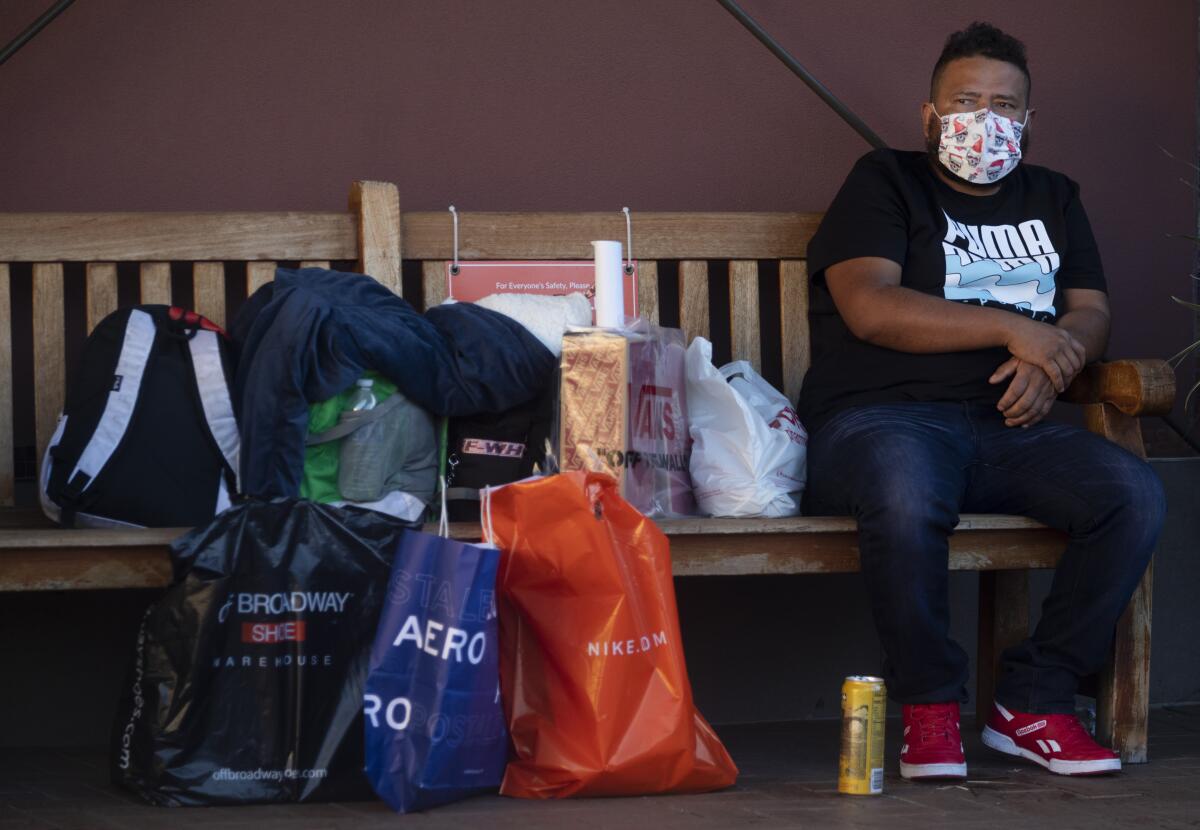
At Ecco, which sells shoes, handbags, belts and wallets, normal customer flow at this time would have been 2,000 an hour — in the pandemonium of 2019. In the pandemic of 2020, circa Thanksgiving weekend, the comparative number is 150, said store manager Ivan Ramirez.
Ramirez doesn’t minimize the health risk and worries when customers don’t respect the six-foot “bubble” that is supposed to exist between people. He says the rules regarding percentage of occupancy allowed by the county can feel “arbitrary.”
“Once you have people inside a location, they don’t measure themselves six feet away,” Ramirez said. “There could be a moment where everyone is just going to crowd up.”
Members of his work hard to sanitize throughout the day and keep people apart — a common theme among store workers who are trying to play by the rules and are concerned about protecting themselves from unnecessary risk.
Ramirez is grateful his company has tried to hold on to workers, but he worries about the economic effect of the county health orders.
“If we were a mom-and-pop, definitely, there would be no way we would be making ends meet,” Ramirez said. “Employees would be getting cut left and right.”
By 12:30 p.m., both the temperature and the crowd size had risen at the Citadel. Lines started forming outside the more popular stores, including Tommy Hilfiger. People were waiting an hour or more to get in.
The line outside Coach was even longer. And throngs were milling about a central decoration called “Tallest Christmas Tree.”
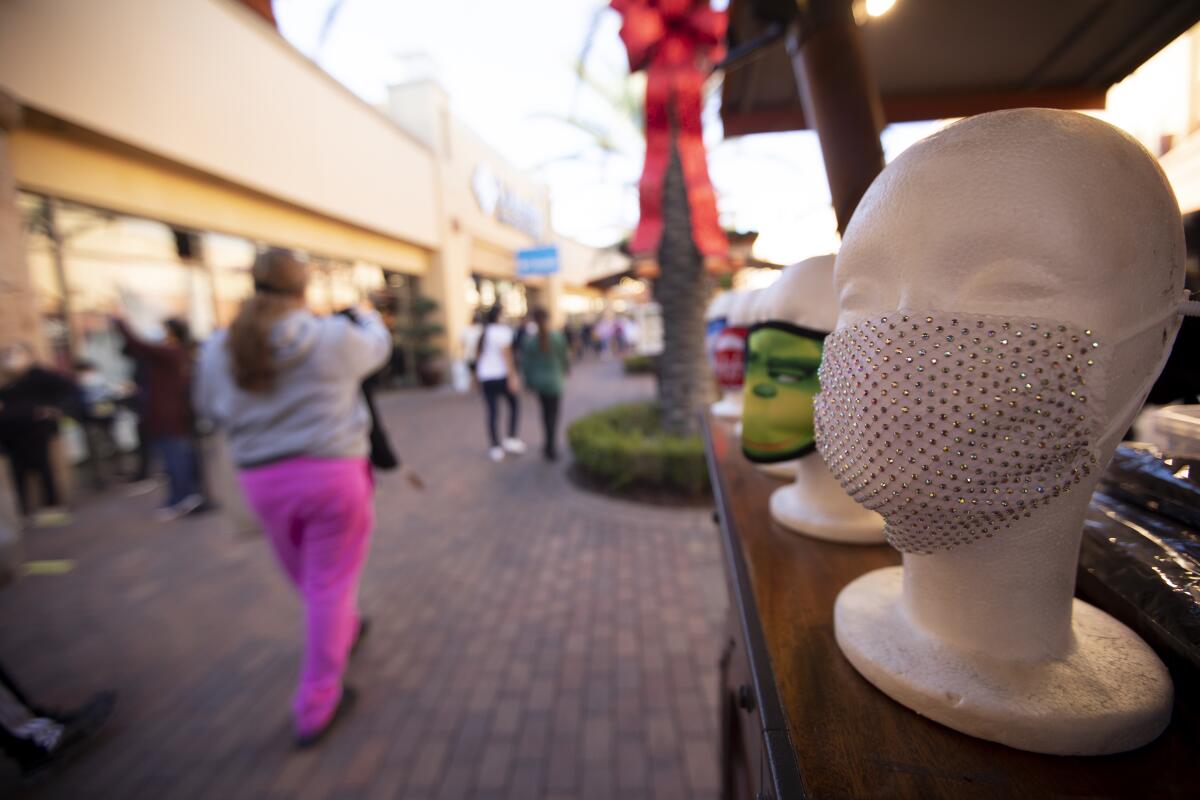
Most of the Flores family was exhausted after just one stop and ready to go home. But they were still waiting for Mom, who was braving one more line.
The scene began to look like the queue for the most popular rides at Disneyland, where people wait in line for ages in exchange for a few minutes of bliss — and part of the bliss was the relatively uncrowded indoor spaces of the stores.
Miguel Flores, 17, thought the good prices were too much to pass up. His brother Jose, 19, questioned that logic, wondering if the prices were just jacked up to make things look like a sale. Jose lost his own job in retail because of the pandemic. Jose Sr. sat nearby, a little anxious about the entire adventure because he’s in his 60s and worried about catching the virus.
Nearly everyone seemed to be wearing masks, but they’d pull them down to eat or drink, and many were walking around with ice cream, shakes, chocolates and other snacks.
Even though she works outside at a kiosk — just outside Skechers — Anabel Velazquez worries about the health risk. She says people take offense when she reminds them to wear a mask or wear it properly — which is ironic because she sells masks and was herself sporting one with a Playboy logo.
And people are still buying masks, one for $10, three for $20.
“There are days where people come to just buy masks,” Velazquez said. “Like they will take $300 worth of masks home.”
Velazquez says the mall requires rent payments whether her stand opens or not, so she feels as bonded to her job as an essential worker.
Most of her customers, she thinks, “are playing with their unemployment money. I think that’s why there’s been that boom for sales. Because if you look around, it’s almost like any other year. There’s no decrease in how many people have come out to shop.”
Ferrer said officials hoped the more narrowly tailored restrictions would be sufficient to slow the spread of the coronavirus without having to give way to stricter stay-at-home orders. The county is “at a different place now than we were in March and April when we didn’t have the science around masking and distancing,” she said.
“Now that we do, it offers us a slightly different path forward,” she added. “But I’ll be honest: It only offers us a different path forward if everyone’s doing it.”
If people don’t follow safety precautions, she said, it’s possible the county could find itself back where it was in the early spring.
“If this doesn’t work, and two to three weeks from now we find ourselves in a worse place than we are, we’re going to have to go back and look at what else do we have as options, because we cannot continue to risk overwhelming the healthcare system,” Ferrer said.
“I don’t think there’s any disagreement about that — that that’s a disaster that we have to avoid at all costs.”
More to Read
Sign up for Essential California
The most important California stories and recommendations in your inbox every morning.
You may occasionally receive promotional content from the Los Angeles Times.


